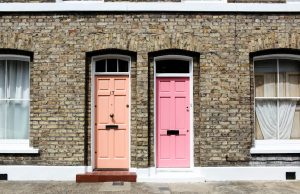A green mortgage can increase your level of pleasure in several different ways. First of all, it might help your finances. Homeowners who own or purchase energy-efficient properties are rewarded with lower interest rates and refunds through green mortgages. Also according to property experts including Notting Hill estate agents, a greener home uses less energy, which means you’ll probably pay less for utilities overall.
Second, owning a home that is eligible for a green mortgage shows that you care about the environment. According to the most recent official statistics, which were published in 2022, residential houses are responsible for about 16% of the UK’s greenhouse gas emissions. Reducing this will lessen the nation’s environmental effect and, at the very least, help with efforts to protect the planet’s future.
What exactly are green loans?
An ecologically friendly mortgage is a means to get money to buy a house that complies with specified energy efficiency requirements. However, if you are looking for properties for sale in London and surrounding areas, only if the house qualifies by having a high enough eco rating will green mortgages often be available at lower interest rates than a regular mortgage from the same provider. The local property experts or estate agents in Tooting can help you on this.
By making your home more environmentally friendly through renovations or by purchasing a home with a higher eco rating, you may be eligible for a green mortgage. To be eligible for a green mortgage, your property will most likely need to have an Energy Performance Certificate (EPC) grade of B or higher.
An energy performance certificate demonstrates what?
An EPC rating evaluates a building’s energy effectiveness and can be used to predict its energy usage. The certificate also explains how to raise a property’s grade. The ranking is valid for ten years and ranges from A (the best) to G. (the worst). EPC ratings for homes in England, Wales, and Northern Ireland are often available at Gov.uk. Properties in Scotland are listed on a different registry.
How do green mortgages work?
A green mortgage functions the same as a conventional mortgage in that interest is levied and monthly payments are required, but it should be less expensive than a standard mortgage from the same supplier. This cost savings may come through a lower interest rate, cash back, or a combination of the two.
A green mortgage won’t always be less expensive than a regular mortgage from a different lender, either. It’s crucial to keep in mind that the mortgage itself is not in any way environmentally friendly. Less energy use in your home has a good environmental impact rather than anything to do with the money used to purchase your home.
Getting approved for a green mortgage
If you are remortgaging a house where you have raised the EPC rating to B or better, or if you are purchasing a home with an EPC rating of B or higher, you should be able to acquire a green mortgage. You’ll also need to provide evidence that the green mortgage you desire is within your means, just like with any other sort of mortgage. So, lenders will want to look up your credit score and assess your overall financial condition, including your income, expenses, debt, and other factors.
Can green mortgages aid in my financial savings?
The interest rate on a green mortgage ought to be lower than it would be on a conventional mortgage from the same lender. But, you might discover that a different lender can provide you a regular mortgage at a better interest rate.
How can I make a green mortgage application?
Getting a green mortgage won’t differ much from finding a regular mortgage. You can submit an application for a mortgage in principle with that lender online, in branch, or by phone after you are aware of your eligibility for the green mortgage offered by the provider. As an alternative, you can compare mortgages to obtain the best rate, then see if the company you’ve settled on offers green mortgages.
Depending on the lender, different documents may be required, but in general, you will need to show proof of identity (such as a current passport or full UK photocard driving licence), proof of income (such as bank statements and payslips), proof of your down payment, and utility or council tax bills as proof of address. Also, you should anticipate being requested to provide a valid EPC with an A or B grade, or an anticipated energy assessment if your home has not yet been built, to demonstrate the energy efficiency of your residence.














